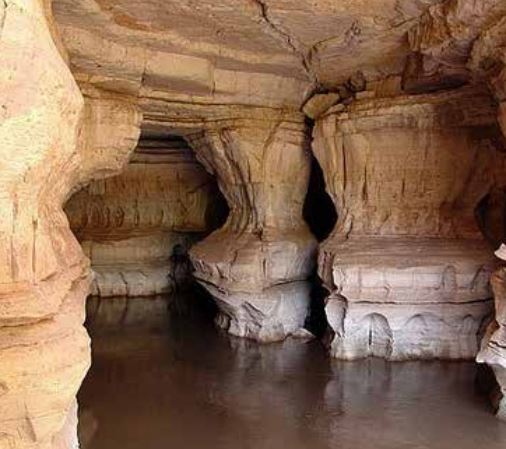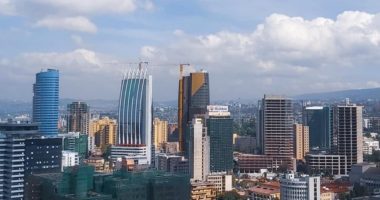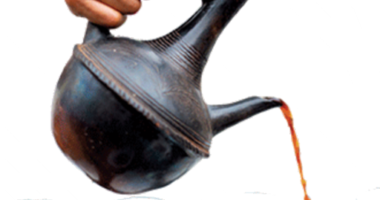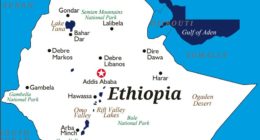Ethiopia has a maginificent cultural heritage, seven of these are included in the world cultural heritage list:
- 1. The Simien National Park (North Gondar Zone)
- 2. The Rock-hewn churches of Lalibela (North Wollo Zone)
- 3. Castles of Gondar and other monuments of Gonder Style (Gondar)
- 4. Lower Valley of the Awash palaentological and prehistoric sites (AfarRegion)
- 5. Tiya pre-historical and archaeological sites, central Tigray (Tigray Region)
- 6. Axum historical and archaeological sites, central Tigray (Tigray Region)
- 7. Valley of the Omo, palaentological and prehistoric sites (South Omo Zone)
The natural beauty of Ethiopia amazes the first-time visitor. Ethiopia is a land of rugged mountains (some are over 4000 meters high) broad savannah, lakes and rivers. The unique Rift Valley is a remarkable region of volcanic lakes, with their famous collections of birdlife, great escarpments and stunning vistas. Tisisat, the Blue Nile falls, must rank as one of the greatest natural spectacles in Africa today. With 14 major wildlife reserves, Ethiopia provides a microcosm of the entire subsaharan eco-system. Birdlife abounds and indigenous animals from the rare Walis Ibex to the shy wild ass roam free just as nature intended. Ethiopia, after the rains, is a land decked with flowers and with many more native plants than most countries in Africa. Among the many natural tourist attractions, only the principal ones are briefly given below.
The Simien Mountain National Park
The Simien mountain massif is one of the major highlands of Africa, rising to the highest point in Ethiopia, Ras Dejen (4620m), which is the fourth highest peak in the continent. Although Simien is in Africa and not too far from the equator, snow and ice appear on the highest points and night temperatures often fall below zero.
The national park has three general botanical regions. The higher lands are mountain grasslands with fescue grasses as well as heathers, splendid Red Hot Pokers and Giant Lobelia. The park was created primarily to protect the Walia Ibex, and over 1000 are said to live in the park. Also in the park are families of the unique Gelada Baboon with its scarlet ‘bleeding heart on its chest,’ and the rare Simien fox. The Simien fox, although named after the mountains is rarely seen by the visitor. Over 50 species of birds have been reported in the Simien Mountains.
Access to the park is from Debark, 101km from Gonder, where riding and pack animals may be hired. This should be arranged in advance through your local tour operator or the Office of the Wildlife Conservation Department.
The Blue Nile Falls (Tisisat Falls)
The River Nile, the longest river in Africa, in Ethiopia. From Lake Tana, the Blue Nile, known locally as Abbay, flows from Ethiopia to meet the white Nile in Khartoum to form the great river that gives life to Egypt and the Sudan. It has been said that the Blue Nile contributes up to 80% of the Nile’s flow. Nowhere is it more spectacular than when it thunders over the Tisisat Falls near Bahar Dar. Here millions of gallons of water cascade over the cliff face and into a gorge, creating spectacular rainbows, in one of the most awe-inspiring displays in Africa, earning its name ‘Smoking Water’. The Blue Nile falls can easily be reached from Bahar Dar and the Scenic beauty of the Blue Nile Gorge, 225KM from Addis Ababa, can be enjoyed as part of an excursion from the capital.
Lake Tana
Lake Tana, the largest lake in Ethiopia is the source of the Blue Nile from where it starts its long journey to Khartoum and on to the Mediterranean. The 37 islands that are scattered about the surface of the Lake shelter fascinating churches and monastries, some of which have histories dating back to the 13th Century. However, it should be noted that most of the religious houses are not open to women. The most interesting islands are:
Birgida Mariam, Dega Estefanous, Dek, Narga, Tana Cherkos, Mitsele Fasiledes, Kebran and Debre Maryam. Kebran Gabriel is the principal monastery which can be visited by male tourists from Bahar Dar with its impressive Cathedral-like Building first built at the end of the 17th Century. Dega Estephanos, which is also closed to women, is on an island in the lake, and is reached by a very steep and winding path. Although the church is relatively new (only one hundred years old), it houses a Madonna painted in the 15th century. However, the treasury of the monastery is a prime attraction with the remains of several emperors, as well as their robes and jewels. On the banks of the lake are many more religious houses such as Ura Kidane Mehret and Narga Selassie, many of which are open to women.
Near Gorgora, at the northern end of the lake, the Susneyos palace is a forerunner of the magnificent palaces and castles of Gonder, and dates from the reign of Emperor Susneyos. In the same area the medieval church of Debre Sina Mariam is particularly important. A sail or cruise on Lake Tana is one of the most pleasant excursions for visitors to this region, particularly in the heart of the summer. Boats can be hired from the Marine Transport Authority in Bahir Dar. Along the lakeshore bird life, both local and migratory visitors, make this an ideal place for birdwatchers. Bird lovers will not want to miss Fasilidas island, which is especially famous as an important wetland. The whole of the lake Tana region and the Blue Nile Gorge have a wide variety of birds both endemic and visitors. The variety of habitats, from rocky crags to rain forests and important wetlands, ensure that many other different species should be spotted.
The Sof Omar Cave
Sof Omar is one of the most spectacular and extensive underground cave systems in the world. Formed by the Wabi River as it changed its course in the distant past and carved out a new channel through limestone foothills, the Sof Omar systems is an extraordinary natural phenomenon of breathtaking beauty.
The cave which is now an important Islamic Shrine was named after the saintly Sheikh Sof Omar who took refuge here many centuries ago. The cave has a religious history that predates the arrival of the Muslims in Bale – a history calculated in thousands of years.
The Rift Valley
The Ethiopian Rift Valley, which is part of the famous East African Rift Valley, comprises numerous hot springs, beautiful lakes and a variety of wildlife. The valley is the result of two parallel faults in the earth’s surface, between which in distant geological time, the crust was weakened and the land subsided. Ethiopia is often referred to as the ‘water tower’ of Eastern Africa because of the many rivers that pour off the high tableland. The Great Rift Valley’s passage through Ethiopia is marked by a chain of seven lakes. Each of the seven lakes has its own special life and character and provides ideal habitats for the exuberant variety of flora and fauna that make the region a beautiful and exotic destination for tourists. Most of the lakes are suitable and safe for swimming and other water sports. Lakes Abiata and Shalla are ideal places for bird watchers. Most of the Rift Valley lakes are not fully exploited for tourists except lake Langano where tourist class hotels are built. The Rift Valley is also a site of numerous natural hot springs and the chemical contents of the hot springs are highly valued for their therapeutic purposes though at present they are not fully utilised. In short, the Rift Valley is endowed with many beautiful lakes, numerous hot springs, warm and pleasant climate and a variety of wildlife. It is considered as one of the most ideal areas for the development of international tourism in Ethiopia.
The Awash National Park
Lying in the lowlands at the east of Addis Ababa and striding the Awash River, the Awash National Park is one of the finest reserves in Ethiopia. The Awash river, one of the major rivers of the horn of Africa, waters important agricultural lands in the north of Ethiopia and eventually flows into the wilderness of the Danakil Depression. The dramatic Awash Falls, as the river tumbles into its gorge, is the sight not to be missed in the national park. Awash national park, surrounding the dormant volcano of Fantale, is a reserve of arid and semi-arid woodland and savannah, with riverain forests along the Awash river. Forty six species of animals have been identified here, including beisa oryx and Swayne’s heartbeest. The bird life is prolific especially along the river and in the nearby lake Basaka and there are fine endemic amongst the 392 species recorded. A special attraction is the beautiful clear pools of the Filwoha hot springs. Access to the park is best from the main Addis Assab highway, and there is a caravan lodge called Kereyu Lodge at the edged of the gorge.
The Omo National Park
One of the most beautiful national parks in Ethiopia, its 4068 km of wilderness bordered by the Omo river, is home to an amazing range of wildlife. 306 species of birds have been identified here, while large herds of eland, some buffalo, elephants, giraffe, cheetah, lion, leopard, Burchell’s zebra are not uncommon.
The park is not easily accessible, as the current means of access is via Omorate and the ferry to the north bank of the river. The park HQ is 75 km from Kibish settlement. However, a new airstrip is available close to the HQ and a pleasant campsite on the Mui River – plans are in hand for further major improvements.
The Mago National Park
Covering an area of 2162 km on the banks of the Omo River, the Mago National Park is relatively undeveloped for tourists. The broad grasslands teem with herds of buffalo, giraffe, elephants and kudu, while sometimes it is possible to find lions, leopards and Burchell’s zebra. The abundant bird life here is typical of dry grasslands and river banks.
The Gambala National Park
In these areas many interesting species of animals and birds can often be seen by the visitor. According to the wild life information office, Dowsett Forbs has identified 813 species of birds, 596 residents and 224 regular seasonal migrants in Ethiopia.









